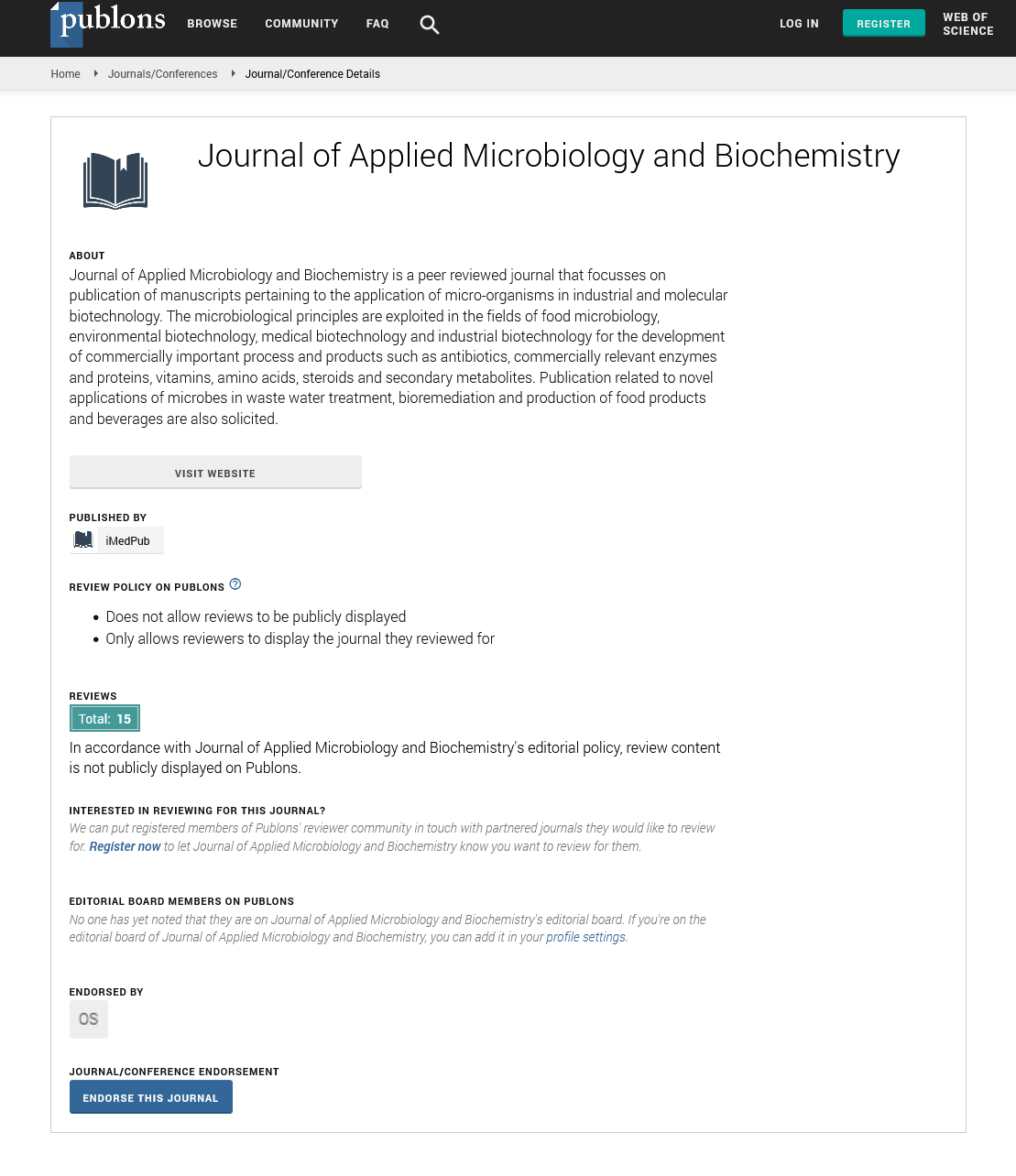ISSN : ISSN: 2576-1412
Journal of Applied Microbiology and Biochemistry
Effect of selected preservatives on nutritional indices of Phaseolus lunatus (lima beans)
7th International Congress on Biochemistry and Molecular Biology
April 28 - 29, 2023 | London, UK
Chibuzo Carole Nweze*, Aworinde Olusola Abosede and Nwefia Wilson Ifeanacho
Nasarawa State University, Nigeria
ScientificTracks Abstracts: JAMB
Abstract
The Quest for food sustainability as well as maintaining the nutritional value of food crops and products over the years have necessitated the use of both natural and artificial preservatives. This research was undertaken to investigate the effect of selected preservatives on the nutritive indices of Phaseolus lunatus (Lima Beans). The P. lunatus used for this research was obtained in bags. It was prepared and sent for analysis in laboratory prior to storage with selected preservatives. The selected preservatives were gotten and prepared for the preservation following the standard protocol. The lima beans were divided into airtight vessels and label it group A to D which were preserved with selected preservatives, DDVP (sniper), birds eye pepper, Wood Ash respectively while the group D serving as control and were left untreated with any preservative. The beans mixed with preservative were left to stay for 6 months. Standard methods were used to assess the effect of the preservatives on the proximate constituents, mineral concentrations and amino acid contents respectively of the preserved groups compared with the control. The results showed that Lima beans is rich in essential amino acids with Lysine showing the highest concentration among the essential amino acid for the pepper preserved and was noticed to be same across all the essential amino acids while wood ash preserved group show dis-improvement in amino acid concentration. The observed improvements in some parameters showed that the chemical in some groups are more effective at some aspect while natural preservatives at some other points. Its effectiveness for a longer shelf life and stop or delay the growth of bacteria, suppress the reaction when food comes in contact with oxygen or heat, they also prevent the loss of some essential aminoacids and some vitamins enhance the food flavors and colors. The results of this study showed that some of the selected preservatives used on the lima beans suggested that it could improve the shelf life and improve nutritive values. Conclusion: Additives and preservatives for a very long time have been of great importance to farmers and food processing industries. Natural methods of preservation usually aim to exclude air, moisture and microorganisms, or to provide environments in which organisms that may result to spoilage cannot survive. In recent time, several inorganic chemicals are used as food preservatives. They are important as it helps to increase shelf life of crops and stop or delay the growth of bacteria, hinders the reaction when food comes in contact with air, moisture or heat, they also prevent the loss of some essential nutrients and as well enhance the food flavours and colours. It has been reported that chemicals which are used as preservatives have some possible influence to the nutritive indices of foods. Even though natural preservatives have been used over the years, artificially produced chemical like sniper and aluminum phosphide were comparatively studied and compared some of the natural preservatives pepper and wood ash. It was observed that the chemical more effective at some aspect while natural preservatives at some other points. Keywords: Nutrition, Preservatives, Preservation, Lima bean, Legumes, Proximate, Minerals.
Biography
Chibuzo Carole Nweze PhD is an Associate Professor of Biochemistry with Nasarawa State University, Keffi, Nigeria. Her area of interest is in Food, Nutrition, Phyto and Industrial Biochemistry. She has numerous publications in outstanding local and International journals. Her research expertise is majorly on Nutraceuticals and Functional foods where she has carried out studies on many indigenous flora for health and diseases management. She has presented reputable trendy papers in many conferences, Workshops and Seminars globally. She has supervised many undergraduate and postgraduate students in mind blowing current issues in Biochemistry research. She is a professional member of many international academic bodies.
Google Scholar citation report
Citations : 342
Journal of Applied Microbiology and Biochemistry received 342 citations as per Google Scholar report
Journal of Applied Microbiology and Biochemistry peer review process verified at publons
Abstracted/Indexed in
- Google Scholar
- China National Knowledge Infrastructure (CNKI)
- Cosmos IF
- Directory of Research Journal Indexing (DRJI)
- Publons
- Secret Search Engine Labs
Open Access Journals
- Aquaculture & Veterinary Science
- Chemistry & Chemical Sciences
- Clinical Sciences
- Engineering
- General Science
- Genetics & Molecular Biology
- Health Care & Nursing
- Immunology & Microbiology
- Materials Science
- Mathematics & Physics
- Medical Sciences
- Neurology & Psychiatry
- Oncology & Cancer Science
- Pharmaceutical Sciences
